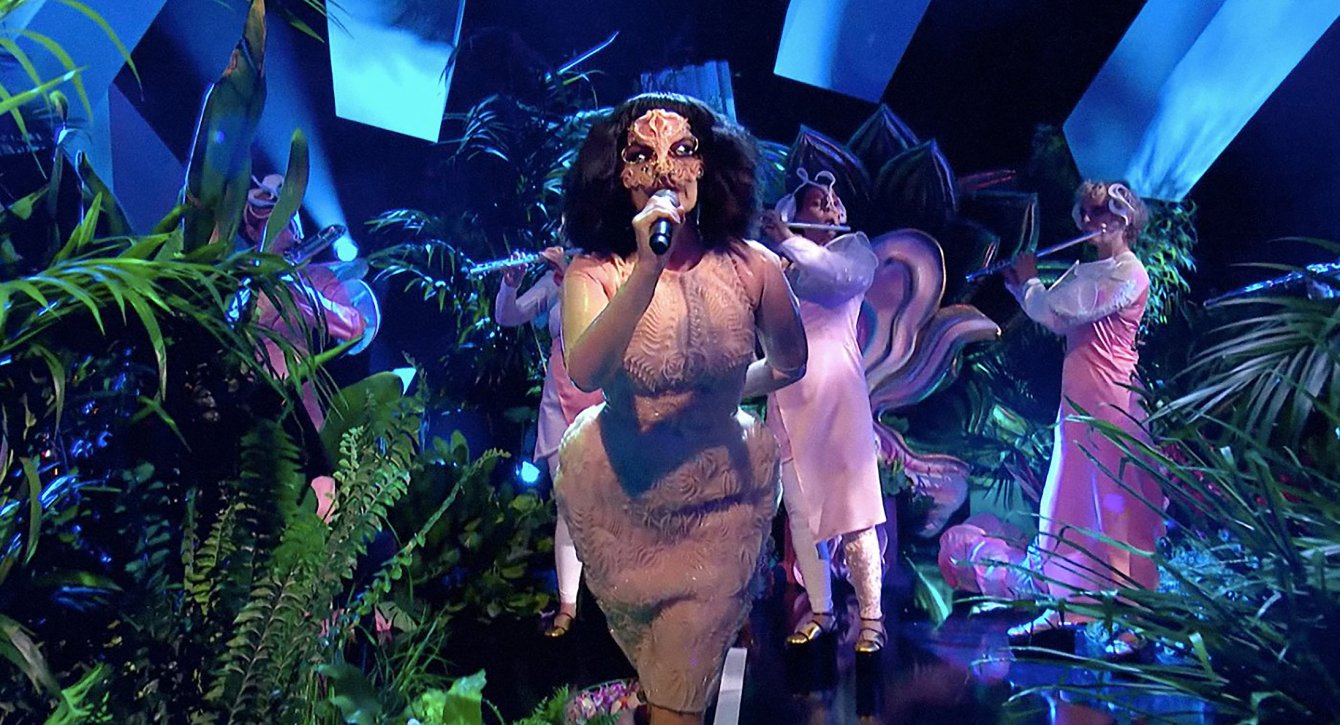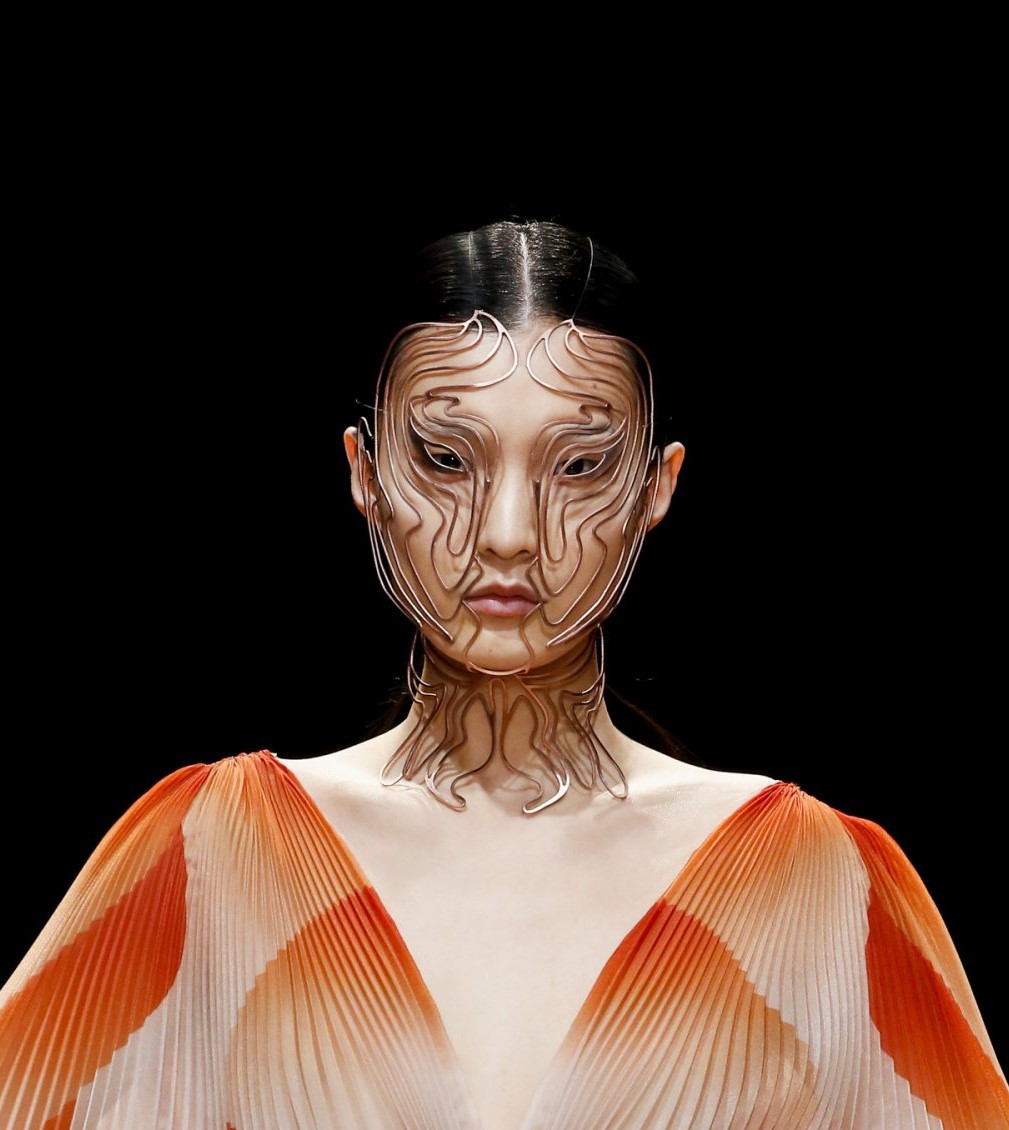3D printing is expanding the possibilities of design within the fashion industry by optimizing production processes, customization, and cost. The technology has become a tool for designers like Dutch artist Iris van Herpen to cover new ground, developing designs with striking features. She is often hailed as a pioneer in utilizing 3D printing as a garment construction technique.
At the haute couture shows as part of Paris Fashion Week 2019, she debuted her new sculptural couture collection at the Musee des Beaux-Arts. Titled “Shift Souls”, the range features van Herpen’s so-called face jewellery “Cellchemy” that was 3D printed in collaboration with the Delft University of Technology (TU Delft). Commenting on the collection, van Herpen says:
“For Shift Souls, I looked at the evolution of the human shape, its idealisation through time and the hybridisation of the female forms within mythology.”

A history of 3D printing high end fashion
Van Herpen has a vast body of work that incorporates the use of 3D printing and other modern technologies. The first instance of 3D printing in her work dates back to 2010, where she designed the “Crystallization” top 3D printed from white polyamide.
She has since gone on to produce 3D printed fashion pieces for the likes of Bjork, Beyonce and Lady Gaga.
Last year at the Paris Fashion Week Haute Couture show 2018, 3D printing featured heavily in her “Ludi Naturae” (Nature Play) collection, a line emphasising graceful, florid shapes. The collection was also a collaboration with researchers at TU Delft.
Speaking to Vogue about the use of 3D printing in her work, van Herpen said “People think that everything I make is 3D printed, but the basis of my work is really craftsmanship. I think a lot of people try to separate the two.”
“I see them as equal, and I actually think that they can complement each other. Sometimes a texture that I’ve been developing on a 3D printer can be an inspiration for a handwork technique, and sometimes it’s the other way around.”

A shift in focus
This year, the Shift Souls collection features 18 pieces, ranging from voluminous, flowing gowns to elaborately waved forms. The designs focus on the subject of human-animal hybrids, using optical illusions to distort the human form.
Some of the gowns present to us detailed patterns of swirling lines and and futuristic silhouettes. Although none of the gowns were 3D printed, some of them were made using 3D laser cutting technology, to stunning effect.
Dividing the collection into several categories, van Herpen’s site tells us that the ‘Symbiotic’ volume of dresses “are made from gradient- dyed silks” arranged on a lasercut PETG frame, creating “hybrid bird shapes […] that hover in symbiosis with the body like mythological creatures.”
Although van Herpen shifts the focus to 3D laser cutting technology in her latest runway, 3D printing still takes part in her showcase. The “Cellchemy” jewellery was developed by 3D scanning each model’s face. This scan data was used to map out a shape locating the shifts in density and contours of their faces. The end result is a series of lace-like masks, created by a high-resolution multi-material 3D printer.

Make your nominations in the upcoming 2019 3D Printing Industry Awards.
Looking for the latest news about 3D printing? Subscribe to our free 3D Printing Industry newsletter, follow us on Twitter and like us on Facebook.
Find 3D Printing Jobs near you now to start your career in additive manufacturing.
Featured image shows close up of model wearing “Cellchemy” facemask. Photo via Iris van Herpen.


